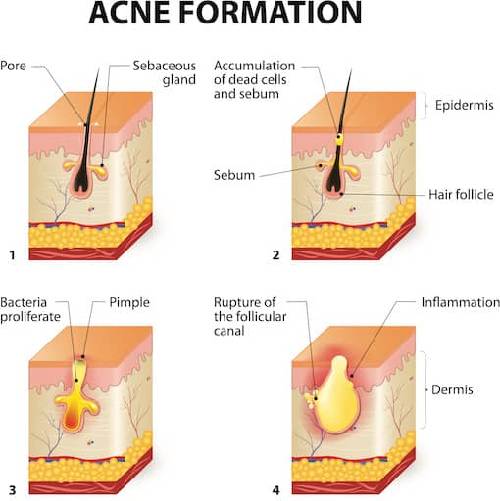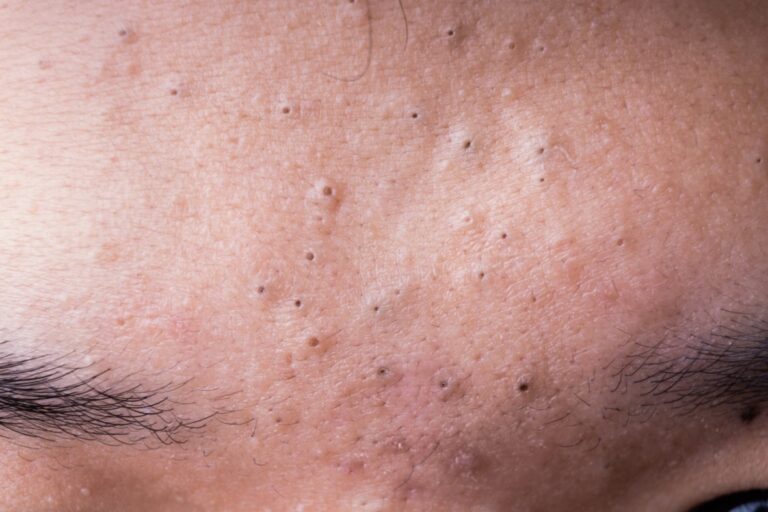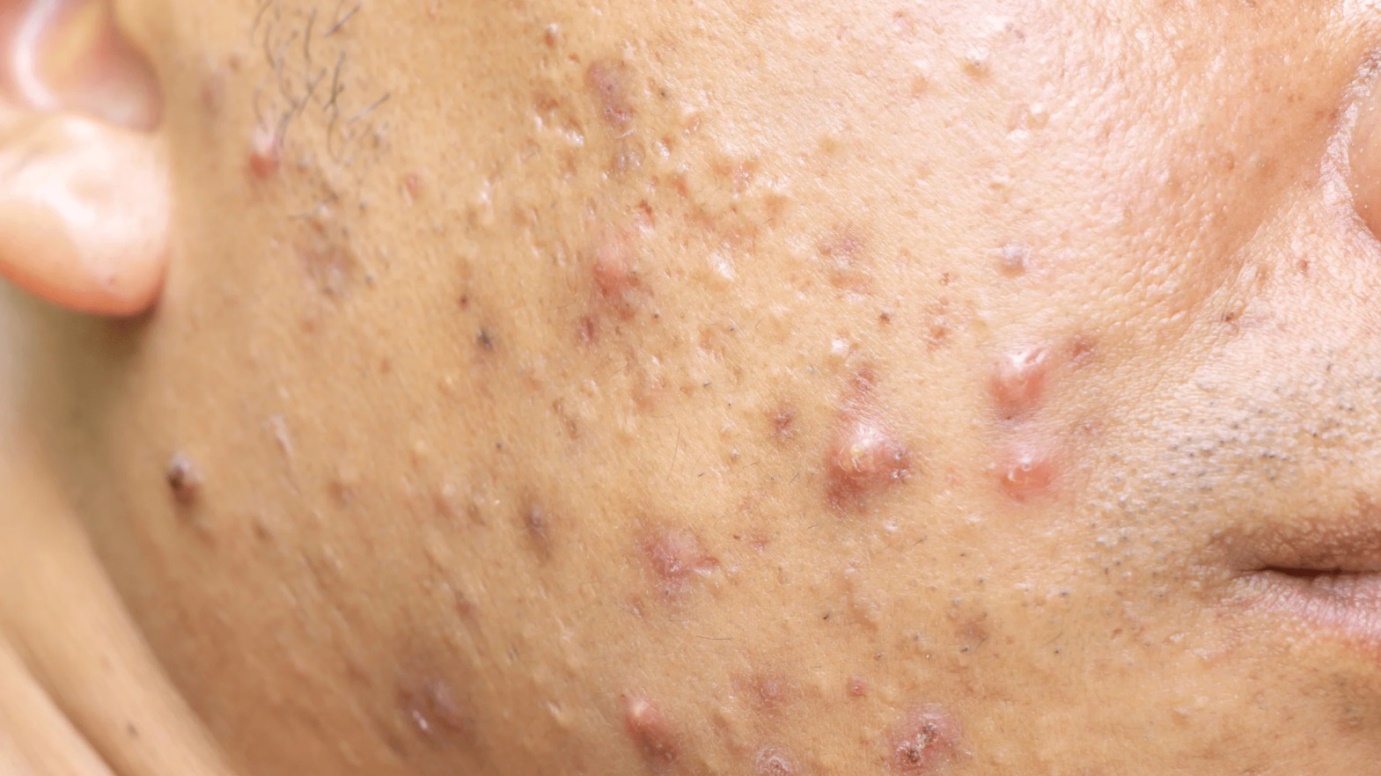What is acne?
Acne is a common skin condition that affects millions of people worldwide. It occurs when hair follicles become clogged with excess oil (sebum), dead skin cells, and bacteria, leading to the formation of pimples, blackheads, whiteheads, and in severe cases, cystic acne. Acne most commonly appears on the face, chest, back, and shoulders, and it can affect people of all ages, especially teenagers and those with acne-prone skin.
What causes acne?
The causes of acne are multifactorial and can include:
- Excess sebum production: Hormonal changes, particularly during puberty, menstruation, or stress, can trigger overactive oil glands. This is a common cause of hormonal acne in both teens and adults.
- Clogged pores: Dead skin cells and oil can block hair follicles, creating an environment where bacteria thrive.
- Bacteria (P. acnes): Propionibacterium acnes, a bacteria naturally present on the skin, can multiply inside clogged pores, causing inflammation and breakouts.
- Hormonal imbalances: Hormonal fluctuations can lead to adult acne, especially in women.
- Diet and lifestyle: High-glycemic diets, dairy products, and stress may worsen breakouts in some individuals.

What are the symptoms of acne?
Acne can present in different forms depending on severity:
- Whiteheads: Closed clogged pores that appear as small white bumps.
- Blackheads: Open clogged pores that appear as tiny black dots.
- Papules: Small red, inflamed bumps that are often tender to the touch.
- Pustules: Pimples filled with pus and surrounded by red skin.
- Nodules: Large, painful lumps beneath the surface of the skin.
- Cysts: Deep, pus-filled lesions that can cause scarring and are common in cystic acne.

What types of acne are there?
There are several types of acne, each with distinct characteristics:
- Comedonal acne: Primarily includes whiteheads and blackheads.
- Inflammatory acne: Includes papules and pustules that are red and swollen.
- Cystic acne: A severe form involving deep, painful cysts and nodules, often requiring specialized treatment.
- Hormonal acne: Flare-ups triggered by hormonal shifts, commonly around the chin and jawline.
- Acne mechanica: Caused by friction or pressure on the skin, often from helmets, masks, or tight clothing.

How is acne diagnosed?
A dermatologist typically diagnoses acne based on a physical skin examination, medical history, and by identifying the type and severity of breakouts. In some cases, hormone or blood tests may be conducted to rule out underlying conditions contributing to persistent acne.
What are the best treatment options for acne?
The best acne treatment depends on the type and severity of the condition. Options include:
- Topical treatments: Over-the-counter or prescription creams, gels, and cleansers with ingredients like benzoyl peroxide, salicylic acid, retinoids, or azelaic acid help unclog pores and reduce inflammation.
- Oral antibiotics: Prescribed for moderate to severe inflammatory acne to reduce bacterial growth and skin inflammation.
- Hormonal therapy: Birth control pills or anti-androgen medications may help regulate hormone-related breakouts, especially in women.
- Retinoids: Vitamin A derivatives like tretinoin and adapalene help prevent clogged pores and are effective for long-term acne management.
- Isotretinoin: A powerful oral retinoid used for severe, cystic acne that hasn’t responded to other treatments.
- Professional procedures: Chemical peels, LASER therapy, or extractions performed by dermatologists can enhance results.
- Non-comedogenic skincare: Using non-comedogenic moisturizers, sunscreens, and makeup helps prevent future breakouts.
Can acne be cured?
While there is no permanent cure, acne can be successfully managed with a combination of consistent treatment, a good skincare routine, and healthy lifestyle habits. Early intervention and the use of dermatologist-recommended acne products can also help prevent acne scars and flare-ups.
How can I manage acne at home?
In addition to prescribed treatments, these everyday practices can help control acne:
- Gently wash your face twice daily with a mild cleanser.
- Avoid scrubbing, which can irritate the skin and worsen breakouts.
- Use skincare and makeup products labeled as non-comedogenic or oil-free.
- Refrain from picking or popping pimples to reduce the risk of scarring and infection.
- Eat a balanced diet rich in fruits, vegetables, and water, while avoiding high-sugar or
greasy foods. - Manage stress through regular exercise, sleep, and relaxation techniques.

